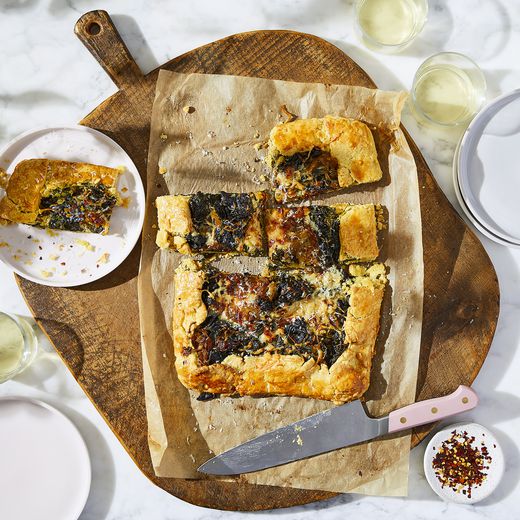Home Decor
How to Tell the Value of Your Antiques—in 5 Simple Steps
If you love flea markets and garage sales, bookmark this guide now.
A few years ago, I drove an hour to snag an old dresser from the garage of a vintage dealer. It was quite a trek, but the piece was too special to pass up. A dimensional crest topped with a waving ribbon was sprawled across its four drawers, and, save for a few chips, it was in wonderful condition. Better yet, it only cost me $100.
The seller couldn’t tell me much about it, other than that he estimated it was built in the 1930s because of its extravagant style. To find out more, I recently DM’d Tilt Top Living’s Hayley and Craig Redmond Cilley, a pair of history buffs who help their followers identify and date their antique or vintage furniture for—get this—just $25. “We wholeheartedly believe that knowing more about your pieces’ stories creates a greater sense of connection and appreciation for them,” Haley says, adding, “There is something really special about knowing an object has experienced a long journey before you and that you get to add to it.”
As it turns out, the dealer was right on the money. With just a few photos to go off of, Hayley and Craig were able to determine my dresser was white oak and machine-made in an American factory in the 1920s as art deco style was coming in vogue. Curious how they did it? Below, accompanied by photos of some of their favorite finds, the duo walks us through five easy ways to figure out the make, model, and age of your furniture.
1. Do your research
There are dozens of furniture styles out there–baroque, rococo, mission, Edwardian, art deco. The more you know about each, the easier it will be to decode your antiques’ backstories. In short, read up. This handy guide by 1st Dibs is a great place to start.
2. Handmade Vs. Machine-made
The fastest way to determine a piece of furniture’s age is to verify if it’s handmade or machine-made. The giveaway? Its drawer construction. With younger machine-made items, evenly spaced little trapezoids that look like grinding gears connect the front of the drawer to its side. Older antique pieces, on the other hand, have small triangular pins that are more spread out and resemble a bird’s tail. It can be challenging to pick up on the subtle differences, but Tilt Top Living’s Teaching Series will help you tell the two apart.
3. Be a little superficial
Over time, natural wood darkens and shiny finishes lose their luster, so if an item wears a really rich hue and you can’t see your reflection in it, chances are it’s an antique. Keep a lookout for signs of use as well as light nicks, scratches, and the like; they’re great indicators that a piece has been well-loved for generations.
4. Look Out for Labels & Logos
Labels provide vital clues to unlocking a piece of furniture’s origin story and are typically branded into the wood or stuck inside (or underneath) drawers. They can even be attached to the back: always do a 360 inspection. No label? No problem. Many companies have evolved their branding over time, so all you need is a logo to get a general idea of your antique’s age. Simply do an online image search for “(brand name) old logos” and you’re well on your way to determining the piece’s birthday.
5. Pay attention to pattern
Veneering, the process of applying thin strips of pricey exotic wood over a less expensive material, was developed in the 1600s as a way to slash production costs. If your wooden furniture features an intricate geometric design or the grain mirrors itself (like the example above) it wears a veneer. The slimmer the veneer, the younger the item. By the 1900s, for example, veneers were paper-thin—think 1/64th of an inch.
Hayley and Craig say the best way to improve your ID’ing know-how is through practice. Explore your local antique malls, hit up estate sales, and scroll through online auctions. You can also hone your skills by bookmarking Tilt Top Living’s growing collection of lessons and tips.
Do any of your antiques tell a story? Share them with us in the comments below.












See what other Food52 readers are saying.